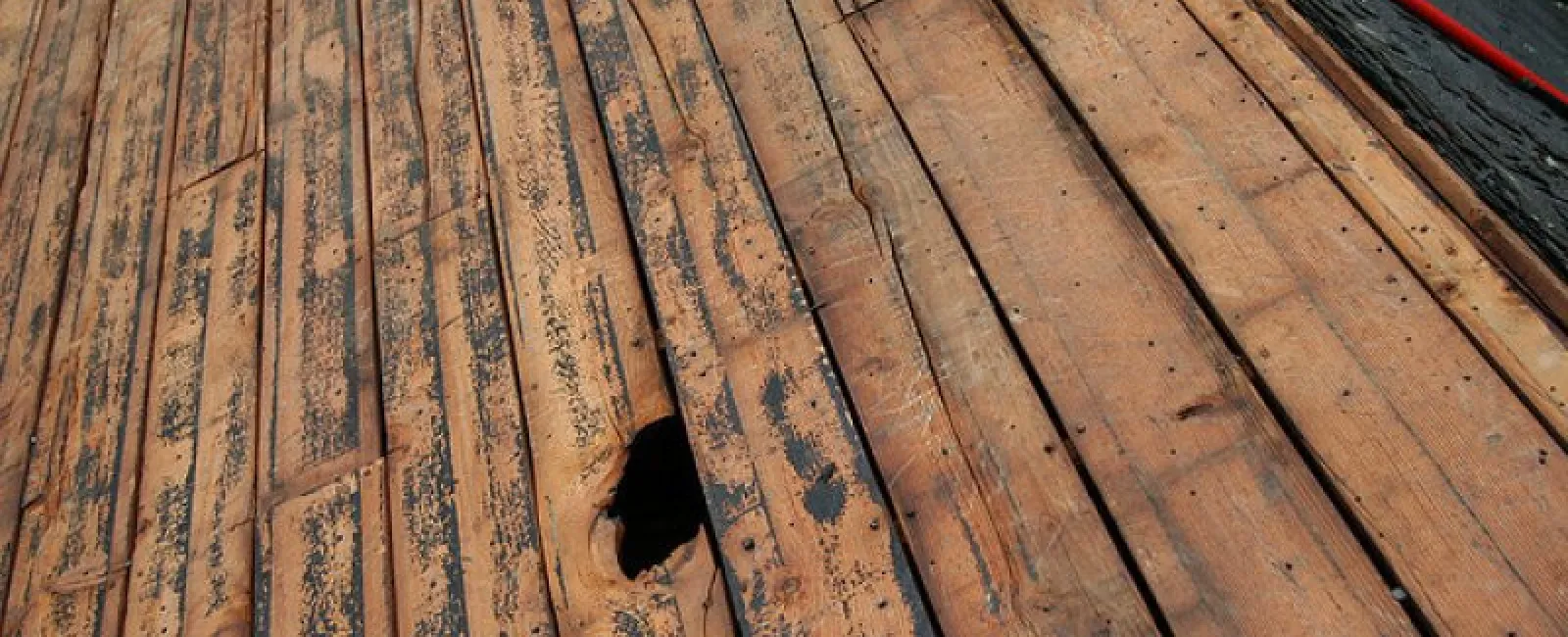As the weather clears up, roof activity becomes more common, whether it’s personal maintenance, appliance repair, or tenants out playing on the shingles. But the rise in rooftop work also presents new dangers, especially when it comes to accidental roof punctures. Read on to learn about punctures and how to prevent them.
What is a roof puncture?
A roof puncture creates a hole in roofing material through a combination of weight and sharp pressure that punches through the roof in one small area. Punctures are particularly dangerous because they are easier to miss than other types of roofing damage, and the puncture often pierces protective felt and membranes, allowing moisture to leak into the most vulnerable parts of the roof.
Roof punctures can happen at any time, but a roof is most at risk when the underlayments are exposed. A flat roof may be more at risk for puncturing than a slanted roof, because weight is not displaced as easily on a flat surface.
The primary causes of punctures
People are the number one cause of roof punctures. Careless behavior leads to punctures in most cases, especially when it comes to technicians working on your home. Roofers may cause punctures with their steps or tools by accident, but many other people without training can also damage the roof – repair professionals working on other parts of you home, painters, people washing skylights, and even smokers who walk out on the roof.
The second, much rarer cause of roof punctures occurs when debris falls on the roof and punctures it. For example, a storm with strong winds may hurl branches or junk against a roof and create punctures. These holes are particularly dangerous because they often occur in the midst of heavy rainfall and immediately create serious leaks that can damage the interior of homes.
Preventing punctures
You can prevent many punctures by carefully vetting professionals that you let on your roof. Repair and cleaning experts who have plenty of experience working on top of a roof know how to walk and act to avoid puncturing the roof. Hire businesses with a good reputation and proven experience to minimize the chance of punctures, and try to avoid going up on the roof for long periods of time yourself – especially with heavy objects that make it easier to damage roof materials.
If you are building a roof, especially a flat roof, there are several ways you can help prevent future punctures. Consider choosing boards designed to resist puncturing specifically, such as DensDeck Roof boards and other options. If there are appliances or windows on your roof that will need regular maintenance, consider adding tougher walkways and sections for technicians to use. Ask us for more information about how to build puncture resistant rooftops for your next project.

